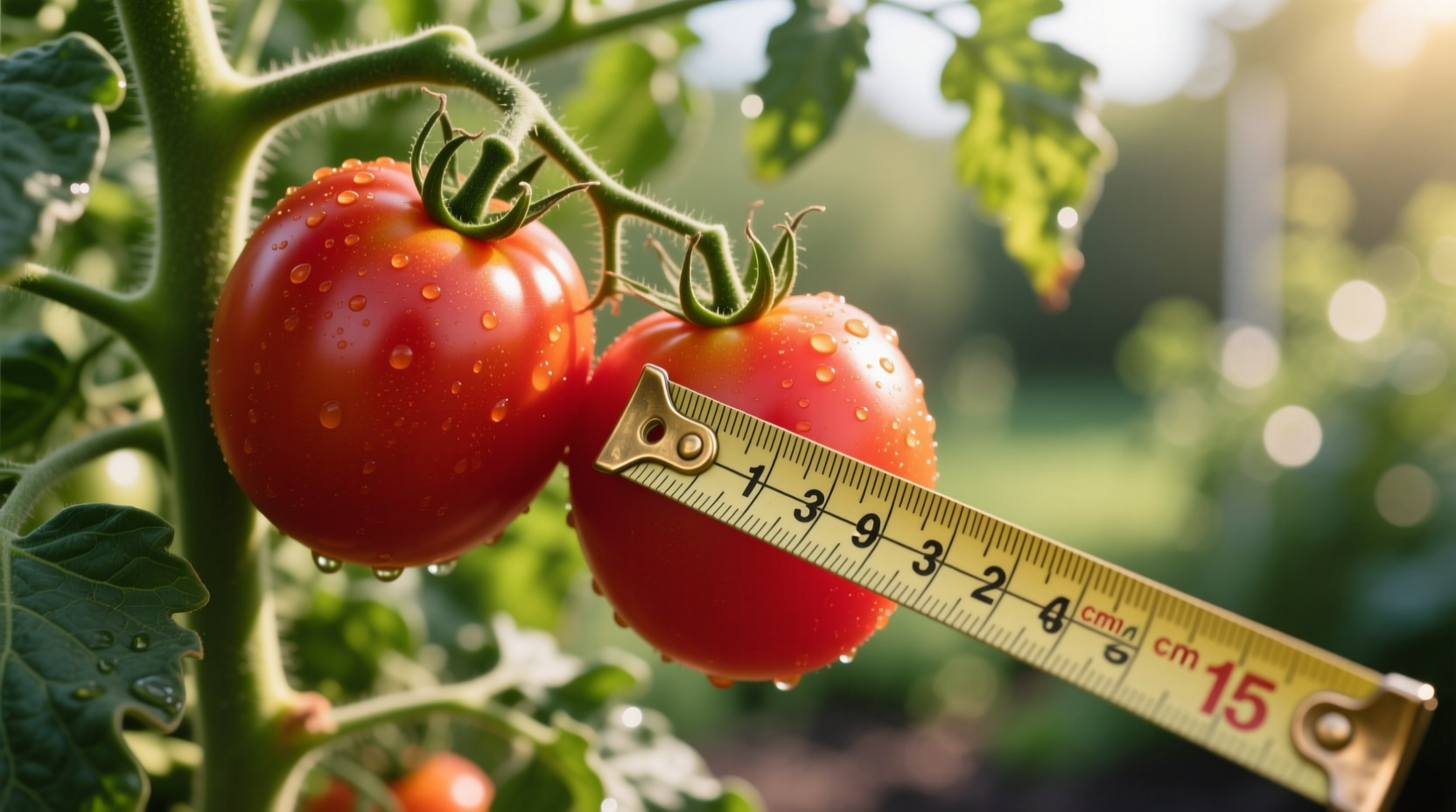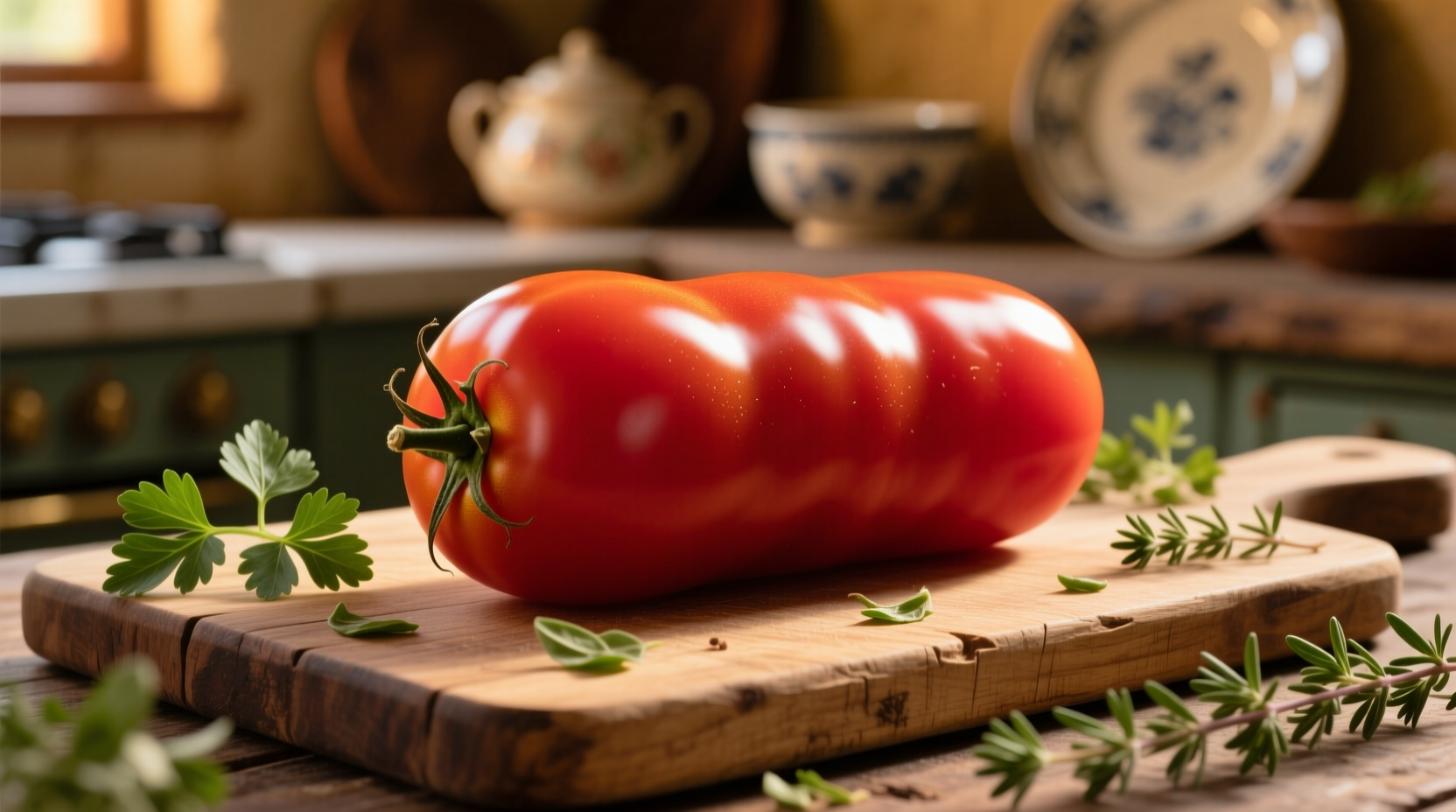Ever wondered why some tomatoes look like plump eggs rather than perfect spheres? That distinctive oval shape isn't random—it's the result of careful breeding that gives oblong tomatoes unique culinary advantages. Whether you're making marinara that doesn't turn watery or growing tomatoes in limited space, understanding these elongated varieties unlocks better cooking and gardening results.
What Makes a Tomato Oblong? The Science Behind the Shape
Botanically classified as Solanum lycopersicum, oblong tomatoes develop their characteristic shape through specific genetic markers that control fruit development. Unlike round varieties where growth occurs equally in all directions, oblong types express genes that promote vertical elongation during cell division. This structural difference creates several practical advantages:
- Denser flesh composition with 25-30% less water content than standard round tomatoes
- Fewer seed cavities (typically 2-3 versus 4-6 in round varieties)
- Thicker walls measuring 6-9mm versus 4-6mm in standard tomatoes
- Higher soluble solids (Brix levels of 5.0-6.5 versus 4.0-5.0 in round types)
Top Oblong Tomato Varieties Compared
| Variety | Dimensions (LxW) | Best Use | Days to Maturity | Flavor Profile |
|---|---|---|---|---|
| Roma | 7.5x5 cm | Sauces, canning | 75-80 | Balanced sweet-tart |
| San Marzano | 10x4 cm | Passata, pizza sauce | 80-85 | Complex, low acidity |
| Amish Paste | 12x7 cm | Drying, preserves | 80 | Rich, honey-like |
| Plum Regal | 8x5 cm | Container gardening | 70-75 | Vibrant, classic tomato |
Source: University of Minnesota Extension tomato variety database (2024)
Why Shape Matters: Culinary Applications That Shine
Professional chefs consistently choose oblong tomatoes when precision matters. The structural advantages translate directly to cooking performance:
Sauce Perfection Without the Strain
When making tomato sauce, oblong varieties require 30-40% less reduction time than round tomatoes. Their lower moisture content means you spend less time simmering out excess water—preserving fresh flavor while achieving perfect consistency. San Marzano tomatoes, protected by EU PDO status since 1996, contain just 4.5% moisture compared to 6.2% in standard varieties, explaining their legendary performance in Neapolitan pizza sauce.
Efficient Processing for Home Preservers
Home canners report 25% higher yield when using oblong tomatoes. With fewer seeds and less gel surrounding them, you get more usable flesh per pound. The USDA's Complete Guide to Home Canning specifically recommends Roma and other paste tomatoes for their superior texture retention after processing.

Growing Oblong Tomatoes: Space-Smart Success
These varieties offer distinct advantages for gardeners with limited space. Most oblong types grow on determinate (bush) plants that reach just 3-4 feet tall—perfect for containers or small gardens. Consider these growing tips:
- Container requirements: Use pots at least 18 inches wide with drainage holes (5-gallon buckets work perfectly)
- Support system: Single-stake with soft ties—no caging needed for most determinate varieties
- Watering pattern: Deep, infrequent watering (1-1.5 inches twice weekly) prevents cracking in these thin-skinned varieties
- Fertilizer balance: Use 5-10-10 formula to encourage fruit development over leafy growth
Nutritional Profile: More Than Just Shape
Research from the USDA Agricultural Research Service shows oblong tomatoes contain 15-20% more lycopene than standard round varieties. This powerful antioxidant becomes more bioavailable when tomatoes are cooked—making these varieties doubly valuable for health-conscious cooking. A single cup of cooked San Marzano tomatoes delivers 25mg of lycopene versus 20mg in the same amount of cooked round tomatoes.
Selecting & Storing for Maximum Flavor
When choosing oblong tomatoes at market, look for these quality indicators:
- Uniform color: Deep, consistent red without green shoulders (except for heirloom varieties)
- Firmness: Slight give when gently squeezed—avoid rock-hard or mushy specimens
- Stem condition: Green, fresh-looking stem indicates recent harvest
- Weight: Should feel heavy for their size, indicating proper hydration
Never refrigerate fresh tomatoes—the cold destroys flavor compounds. Store at room temperature stem-side down on a plate for up to 5 days. For longer storage, process into sauce or freeze whole (they'll defrost perfectly for cooking).
When Oblong Tomatoes Aren't the Answer
While versatile, oblong varieties have specific limitations. Avoid them when:
- Preparing fresh caprese salad (their dense texture doesn't release juice like beefsteak tomatoes)
- Need tomatoes for stuffing (round varieties hold shape better)
- Growing in extremely cool climates (most oblong types require warmer temperatures to set fruit)
- Seeking maximum fresh-eating juiciness (cherry or beefsteak varieties outperform)











 浙公网安备
33010002000092号
浙公网安备
33010002000092号 浙B2-20120091-4
浙B2-20120091-4